Dithizone
Synonym(s):Diphenylthiocarbazone;Dithizone
- CAS NO.:60-10-6
- Empirical Formula: C13H12N4S
- Molecular Weight: 256.33
- MDL number: MFCD00003025
- EINECS: 200-454-1
- SAFETY DATA SHEET (SDS)
- Update Date: 2024-12-18 14:15:32
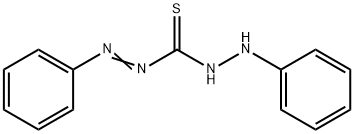
What is Dithizone?
Chemical properties
dark brown or black crystals
The Uses of Dithizone
Dithizone is an organosulfur compound that acts as a chelating agent and forms complexes with metals such as lead and mercury. Dithizone is used to assess the purity of human pancreatic islet preparations used for transplantation into patients with type 1 diabetes.
The Uses of Dithizone
Sensitive reagent for several heavy metals, Co, Cu, Pb, and Hg; especially for the estimation of minute amounts of Pb.
The Uses of Dithizone
Dithizone is used as an indicator for minute amounts of lead. It acts as a chelating agent for heavy metal poisoning. As a ligand, it forms complexes with metals like zinc, lead and mercury. Further, it is used to assess the purity of human pancreatic islet preparations, which is used for transplantation in patients with type 1 diabetes. In addition to this, it is used as a titrant in the quantitative determination of heavy metals.
What are the applications of Application
Dithizone is A titrant in the quantitative determination of heavy metals
Definition
ChEBI: Dithizone is a member of phenylhydrazines.
General Description
Dithizone (Diphenylthiocarbazone) is used as chelating agent for zinc. It is widely used for the liquid-liquid and solid phase extraction of various metals since it forms stable complexes with the metals.
Purification Methods
The crude dithizone is dissolved in CCl4 to give a concentrated solution. This is filtered through a sintered glass funnel and shaken with 0.8M aqueous ammonia to extract dithizonate ion. The aqueous layer is washed with several portions of CCl4 to remove undesirable materials. The aqueous layer is acidified with dilute H2SO4 to precipitate pure dithizone. This is dried in a vacuum. When only small amounts of dithizone are required, purification by paper chromatography is convenient. [Cooper & Hibbits J Am Chem Soc 75 5084 1933.] Instead of CCl4, CHCl3 can be used, and the final extract, after washing with water, can be evaporated in air at 40-50o and dried in a desiccator. It complexes with Cd, Hg, Ni and Zn. [Beilstein 16 H 26, 16 IV 18.]
Properties of Dithizone
| Melting point: | 168 °C (dec.) (lit.) |
| Boiling point: | 376.1±25.0 °C(Predicted) |
| Density | 1.2578 (rough estimate) |
| refractive index | 1.5700 (estimate) |
| storage temp. | no restrictions. |
| solubility | Chloroform (Slightly), DMSO (Slightly), Methanol (Slightly) |
| form | Crystalline |
| pka | pK1:4.50;pK2:15 (25°C) |
| color | Black powder |
| Water Solubility | Soluble in ethanol, chloroform, dimethylsulfoxide, and pyridine. Insoluble in water. |
| Merck | 14,3377 |
| BRN | 748838 |
| Stability: | Stable. Incompatible with strong oxidizing agents. |
| CAS DataBase Reference | 60-10-6(CAS DataBase Reference) |
| EPA Substance Registry System | Diazenecarbothioic acid, phenyl-, 2-phenylhydrazide (60-10-6) |
Safety information for Dithizone
| Signal word | Warning |
| Pictogram(s) |
 Exclamation Mark Irritant GHS07 |
| GHS Hazard Statements |
H315:Skin corrosion/irritation H319:Serious eye damage/eye irritation |
| Precautionary Statement Codes |
P305+P351+P338:IF IN EYES: Rinse cautiously with water for several minutes. Remove contact lenses, if present and easy to do. Continuerinsing. |
Computed Descriptors for Dithizone
Dithizone manufacturer
Explicit Chemicals Pvt Ltd
New Products
Tert-butyl bis(2-chloroethyl)carbamate (S)-3-Aminobutanenitrile hydrochloride N-Boc-D-alaninol N-BOC-D/L-ALANINOL N-octanoyl benzotriazole 4-Hydrazinobenzoic acid 3,4-Dibenzyloxybenzaldehyde Electrolytic Iron Powder 1,1’-CARBONYLDIIMIDAZOLE R-2-BENZYLOXY PROPIONIC ACID 4-HYDROXY BENZYL ALCOHOL 1,1’-CARBONYLDI (1,2-4 TRIAZOLE) S-2-CHLORO PROPIONIC ACID (2-Hydroxyphenyl)acetonitrile 4-Bromopyrazole 5-BROMO-2CYANO PYRIDINE 5,6-Dimethoxyindanone 5-broMo-2-chloro-N-cyclopentylpyriMidin-4-aMine 3-(Hydroxymethyl)benzoate N-Boc-2-chloroethylamine 1-Bromo-2-methoxy-3-nitrobenzene N-Methyl-3-cyclopenten-1-amine 2-Bromo-3-hydroxybenzaldehyde 1H-indazole-5-carboxamideRelated products of tetrahydrofuran


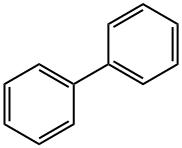
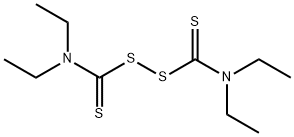
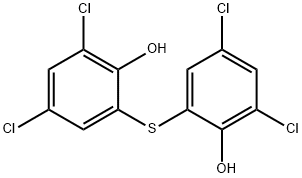
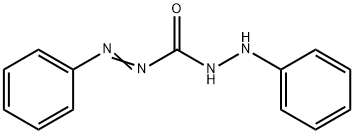


You may like
-
 Dithizone 99%View Details
Dithizone 99%View Details -
 Dithizone CAS 60-10-6View Details
Dithizone CAS 60-10-6View Details
60-10-6 -
 Dithizone CAS 60-10-6View Details
Dithizone CAS 60-10-6View Details
60-10-6 -
 Dithizone CAS 60-10-6View Details
Dithizone CAS 60-10-6View Details
60-10-6 -
 Dithizone pure CAS 60-10-6View Details
Dithizone pure CAS 60-10-6View Details
60-10-6 -
 Dithizone 85% CAS 60-10-6View Details
Dithizone 85% CAS 60-10-6View Details
60-10-6 -
 Dithizone extrapure AR CAS 60-10-6View Details
Dithizone extrapure AR CAS 60-10-6View Details
60-10-6 -
 Dithizone AR CASView Details
Dithizone AR CASView Details